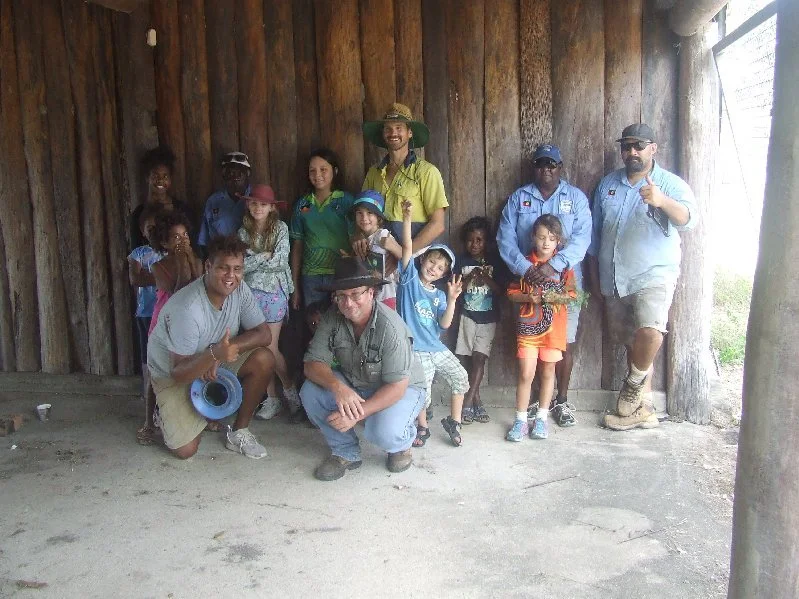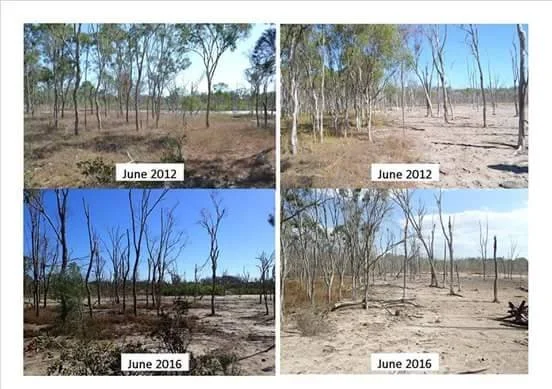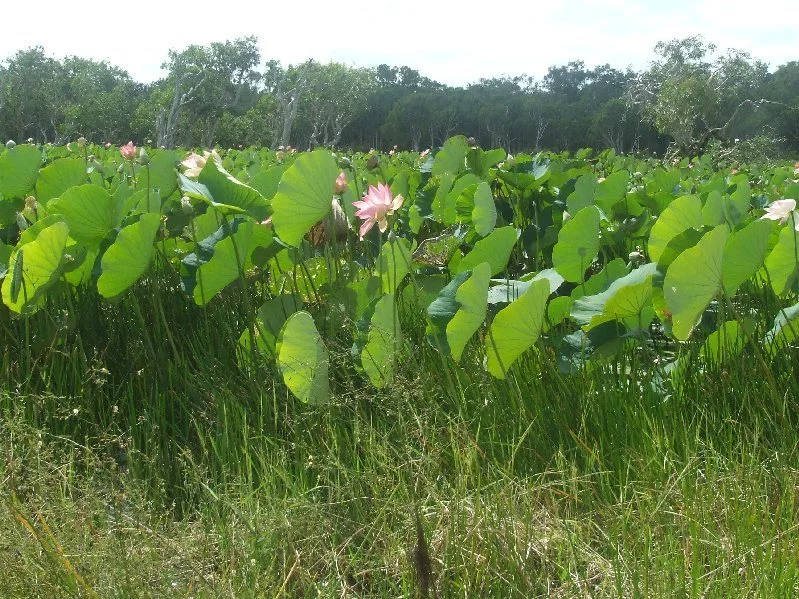Lama Lama | Baseline Weed Control Training/Mentoring Program Report
27/06/2016 to 09/07/2016
Travelled to Lilyvale Station to conduct Base-Line Natural Resource Management, weed control, training and mentoring.This run was to refresh and continue on the work that was a part of the Lama Lama systematic baseline, strategic NRM work and weed control program, on their country.
Liaised with traditional Owners, the Lama Lama Ranger group, and the Lilyvale leaseholder.
They were extremely pleased that we are continuing the program which has been ongoing for many years.
There had been enough rainfall to kick-start vigorous regrowth of all types of vegetation, especially the weeds.
The weeds controlled were classified as a high priority on the Lama Lama Pest Management Plan.
Assessments were carried out to determine the success or failure of the control work which had taken place recently.
All of the pest species identified on the pest management Plan were controlled.
These species included Sicklepod, Rubbervine, Coffee senna, Sida, Lantana, and Hyptis.
We conducted a complete program.
An initial meeting was conducted to coordinate the fortnight's activities was conducted at the start of the work.
Conducted a refresher training session on Weed control techniques, and safe chemical use.
Brought everyone up to speed on using the correct chemical mixture rates. Also made sure everyone was familiar what chemicals to use on what weed for maximum performance.
We conducted a weed walk and the junior ranger collected sample and were asked to identify their collected samples, which they all did individually.
In conjunction with Simon Thompson from DATSIP, we helped the rangers conduct a series of test on the health of their coastal and wetland areas.
This was a follow up on the climate change work that was done by the rangers and Simon in 2012.
This has been ongoing over several years.
As a result of poor wet seasons and other climatic factors, the die back has been very alarming.
We also participated in early season traditional burning to provide a buffer between the cattle grazing land and the national park. The national parks helicopter participated as well.
This was to prevent major hot wildfire events later in the dry season.
Hopefully this will reduce major damage to fragile ecosystems as the dry season progresses.
To finish off the first week of training we went down with a group of senior rangers and started to tie of the mesh fencing that had not been finished at Goose Swamp.
Because this job had not been finished, you could see where the feral animals were getting in and damaging the swamp soil and fouling up the water quality.
At the start of the second week of training we travelled out to a location between Goose-swamp and Dinner-hole where rubber-vine had been found and began survey, mapping, and control work with a small group.
Colin from National Parks arrived Monday evening.
With Colin and a team of Lama Lama rangers we surveyed, mapped and basal-barked the rubber-vine at the same location as well as at a dam a few kilometres to the south.
With Colin and a team of Lama Lama rangers we surveyed, mapped rubber-vine in the Letter-box/Balcutha swamp areas.
We collected and pressed a sample of this rubber-vine for the herbariam to confirm this most northerly location of infestation found so far on east coast.
A Lama Lama, National Parks joint management meeting was held on Thursday, which all of the rangers attended.
While this was being held, we went out with Colin to the same location and conducted survey, mapping, and control work.
Travelled out to the location between Goose-swamp and Dinner-hole with Colin and a team of Lama Lama rangers where we conducted survey, mapping, and control work.
We believe that we surveyed the patch thoroughly and conducted control work on what was found.
All workplace health and safety obligations were followed.
As part of normal works programming, a project risk assessment and toolbox talk was undertaken.
All appropriate PPE was work when undertaking control activities.
The junior rangers did not participate in any of our weed control work, or chemical application.
In conjunction with the climate change work, a series of weed surveys were carried out at all wetland areas and watering points at Marina Plains, Running Creek, Nineteen mile fence, Lama Lama National Park, and Lilyvale.
This included all the wetland areas in which the ecosystem health checks were undertaken.
A fair amount of scattered rubber vine was observed and recorded as we did our surveys. These areas were treated by basal barking as we went.
These areas included Tidal Areas in and around Marina Plains, Rinyirru National Park, Running Creek, and Lilyvale.
The Queensland National Parks Service provided assistance with all of the control work.
Simon Thompson from DATSIP was also there to assist and help us with the plant identification and environmental monitoring, which has been ongoing for many years.
Photo points were identified and set up with the aim of the rangers to keep returning to monitor the success of their control work. Photos were taken including photo points along the various treatment sites.
All areas of control work were mapped using the GIS systems. The Rangers retained that data. We also did a refresher course in the filling in of chemical usage data sheets and daily work log books.
The data and herbicide usage sheets were also completed. All records were kept by the ranger groups.
Cape York Weeds and Feral Animals Incorporated spent as much time as possible providing advice or building capacity for each of the individual rangers. This has enabled them to work on their country when resources permit.
We cleaned up and maintained all of the gear that was used, and packed it away.
The whole Base-Line Line Training Program has been very successful, with a great deal being achieved.
It has enabled the rangers to have the skills and confidence to carry out all land management activities on their country competently and safely.
The Lama Lama Rangers and Traditional Owners, are to be commended for their professionalism and willingness to get the job done.




